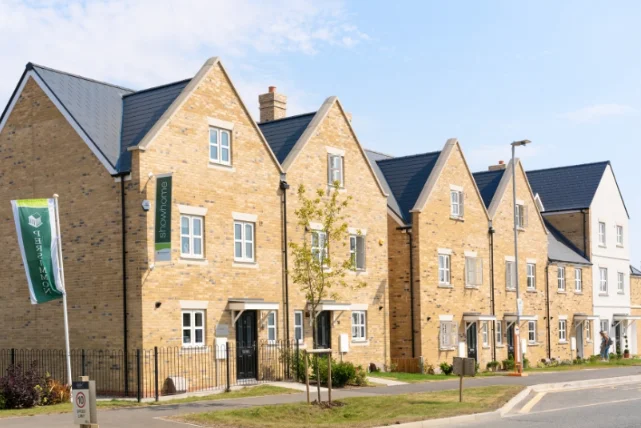Investing in new-build homes as rental properties is becoming increasingly attractive for UK landlords. Property experts like letting agents in Bloomsbury say, from reduced maintenance costs to strong tenant demand, new-builds offer financial benefits that make them a cost-effective choice. Here’s why letting new-build homes can save landlords money and offer long-term advantages.
- Lower Maintenance and Repair Costs
New-build homes come with low maintenance requirements. Built to modern standards, they feature new appliances and materials, reducing the need for frequent repairs.
- New Warranties and Guarantees
Most new-builds come with a 10-year structural warranty, like the NHBC Buildmark, covering major defects. This warranty helps avoid unexpected costs, giving landlords peace of mind.
- Cost Savings: This reduces the risk of expensive repair bills, helping landlords maximise their rental income.
- Fewer Wear-and-Tear Issues
With everything brand new, new-build homes have fewer wear-and-tear issues like outdated wiring or old plumbing. This translates into lower ongoing maintenance costs compared to older properties.
- Enhanced Energy Efficiency
New-builds are built to meet higher energy efficiency standards. They include double glazing, better insulation, and energy-efficient systems that reduce utility costs.
- Lower Energy Bills for Tenants
Better energy efficiency results in lower energy bills, making the property more attractive to tenants and potentially allowing landlords to charge higher rents.
- Higher Tenant Satisfaction: Lower bills and a comfortable living environment encourage longer tenancies, reducing turnover costs.
- Compliance with Regulations
New-builds typically meet the latest EPC standards, helping landlords avoid costly upgrades to comply with future government energy efficiency regulations.
- Modern Features and Amenities
New-build homes include modern fixtures and features that appeal to tenants. From built-in appliances to smart home technology, these homes offer contemporary living standards.
- Higher Rental Yields
Modern amenities mean new-builds can often command higher rents than older properties. Tenants are willing to pay more for updated kitchens, bathrooms, and added conveniences.
- Reduced Need for Upgrades
Unlike older properties, new-builds don’t need frequent upgrades to keep them competitive, reducing the long-term costs for landlords.
- Strong Tenant Demand
New-build properties are popular with tenants, including professionals and families looking for clean, modern, and hassle-free living spaces. This popularity results in faster letting times and lower void periods.
- Professional Tenants and Families
Modern designs, clean layouts, and good amenities make new-builds appealing to professionals and families. Developments often feature facilities like parking, communal areas, and security.
- Lower Void Periods: High demand means shorter vacancies, helping landlords maintain steady rental income.
- Higher Tenant Retention
Tenants in new-build homes are often more satisfied, leading to longer tenancies and lower turnover costs.
- Fewer Legal and Safety Concerns
New-build homes meet the latest health and safety regulations, minimising legal risks. Older properties may require costly upgrades to meet evolving safety standards.
- Meeting Compliance Standards
New-builds comply with current regulations, including fire safety, electrical standards, and accessibility requirements, reducing the risk of fines or legal challenges.
- Peace of Mind: Landlords can focus on letting rather than retrofitting or facing compliance issues.
- Favourable Tax Benefits and Incentives
Investing in new-build homes offers potential tax advantages and access to government incentives, making them attractive for landlords expanding their portfolios.
- Lower Stamp Duty Costs
Some new-build purchases may benefit from Stamp Duty exemptions or discounts, lowering the initial cost of buying the property.
- Help to Buy Scheme
Though primarily aimed at first-time buyers, landlords may benefit indirectly by purchasing new-builds through schemes like Help to Buy, which support property investment.
- Capital Appreciation and Market Value
New-build properties often experience capital appreciation, particularly in developing areas. Modern developments in popular locations can appreciate faster than older properties.
- Investing in Growth Areas
Many new-build projects are in regions undergoing regeneration or improved infrastructure. Investing in these areas can lead to substantial value growth over time.
- Building Equity: Landlords benefit from rental income and potential property value increases.
- Better Resale Opportunities
New-builds typically attract strong resale interest, thanks to their modern amenities and warranties, making them easier to sell in the future.
Final Thoughts
New-build homes offer landlords several advantages, from lower maintenance and energy costs to strong tenant demand. These benefits contribute to higher rental yields, longer tenancies, and reduced risks of legal non-compliance. By investing in new-build properties, landlords can enjoy a more cost-effective and profitable rental experience.

Doris Pollard, a mesmerizing wordsmith and experienced blogger, crafts narratives that carry readers into unexplored realms. Infused with insightful perspectives and vibrant storytelling, Doris’s mastery of language captivates both hearts and minds, making an enduring impression on the literary landscape.

